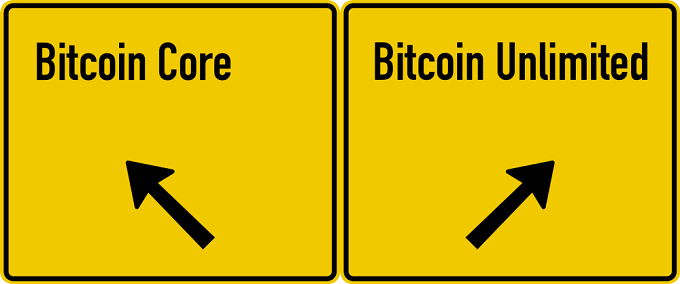Bitcoin | What is a fork and how does it work?
An Elaborate Insight into the Bitcoin Fork
The increased delay in transactions and accumulated stress in the Bitcoin blockchain has resulted in heated discussions about Bitcoin fork. The stress on the blockchain is due to the increase in Bitcoin load. There are many controversial developments and speculations about how Bitcoin aims to handle scalability and other related technical issues.

The current Bitcoin block size is restricted to 1MB for each transaction. This size was used to prevent a denial on service attack. However, this measure has limited the scalability and widespread utilization of Bitcoin system.
Recently, some software developers have written a modern version of Bitcoin software which enables the use of block sizes bigger than 1MB. This software is known as Bitcoin XT. Bitcoin XT is different from every other Bitcoin software because it was developed to facilitate the forking of the Bitcoin blockchain. The development of this software is considered to be a violation to the previous Bitcoin software rule.
Bitcoin has a decentralized blockchain which allows each node to develop Bitcoin protocols. The adoption of a new software will result in new Bitcoin protocols in the system. The new Bitcoin protocol will only be effective if a reasonable percentage (75%) of the new blocks are in support of adopting the new protocol. Those in support of the new protocol will consider the new block to be valid. The remainder (25%) that are not in support of the new protocol will consider the new block as invalid. This will constitute to a Bitcoin fork.

A Bitcoin fork results in two functional blockchain with a similar origin; these chains are the same until the point in which the blockchain forks. From this point, each blockchain exists independently as separate Bitcoin currencies and networks. Thus, it is vital to ensure that there is a large concurrence prior to the Bitcoin fork. If there is an equal consensus on both Bitcoin chains, there will be constant competition between the chains. Nonetheless, the forking of the blockchain can theoretically occur even if there is a reduced consensus.
Asides the development of BitcoinXT, other Bitcoin protocols have been developed to increase block size and enhance Bitcoin transaction. These include BIP103, BIP100 and BIP 102. These protocols were developed to improve transactions and confirmations on the Bitcoin network.
The consensus over the Bitcoin fork has resulted in two divisions; the Bitcoin Core division and Bitcoin unlimited division. Those that belong to the Bitcoin Core division are interested in maintaining the previous protocol of 1MB block size. The individuals in this division are working towards using a code to reduce transactions while developing other means to boost the volume of Bitcoin transaction. On the other hand, The Bitcoin unlimited division is interested in increasing block sizes to the required limit (2MB or more) to speed up transactions and confirmations on the Bitcoin network.

Bitcoin Core has proposed the use of an upgrade known as “Segwit” which facilitates Bitcoin scalability and repairs bugs in the system. The benefits of this solution include the initiation of soft fork, reduced transaction size, increased efficiency and security as well as repair of bugs in the Bitcoin rule. However, this is a short term solution to the problem. The system will eventually require larger blocks to optimize Bitcoin transaction.
The benefits of Bitcoin Unlimited is the larger capacity for Bitcoin transaction and provision of unlimited sizes of block which will provide a lasting solution. However, it is an irreversible solution that needs a hard fork and gives control to miners. The solution is yet to be tested and the reliability is yet to be validated.
It is quite difficult to determine if a large percentage of the Bitcoin community will prefer Bitcoin unlimited or Bitcoin core. Apparently, each solution has an equal percentage of consensus and decisions are yet to be made. While the argument over the preferred solution persists, Bitcoin blocks keep running out of capacity. Thus, individuals have to wait for long hours before their transaction is confirmed. This has resulted in an increase in Bitcoin transaction fees, due to the raise in the demand for instant confirmation of transactions.

Inevitably, a choice has to be made between Bitcoin Core and Bitcoin unlimited to solve the lingering problem of reduced block size capacity and delayed Bitcoin confirmations.
I hope you liked this post. If so, please give it an upvote and share it with your followers by resteeming it!
Have a good one everybody 🙌🏼
Why can't they call a "soft fork" a "spork?"
haha I don't know :D